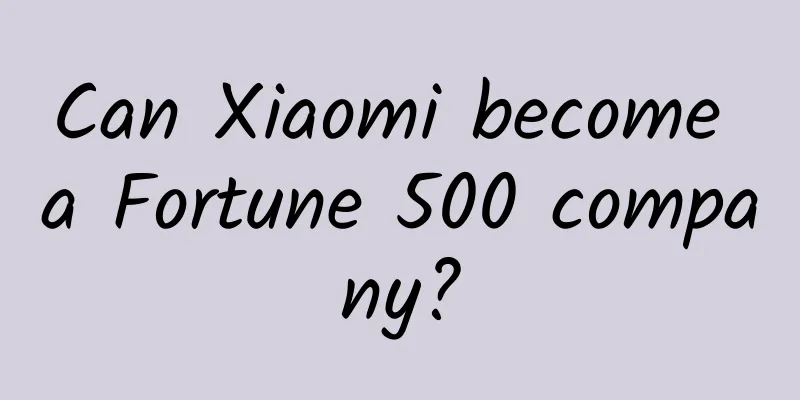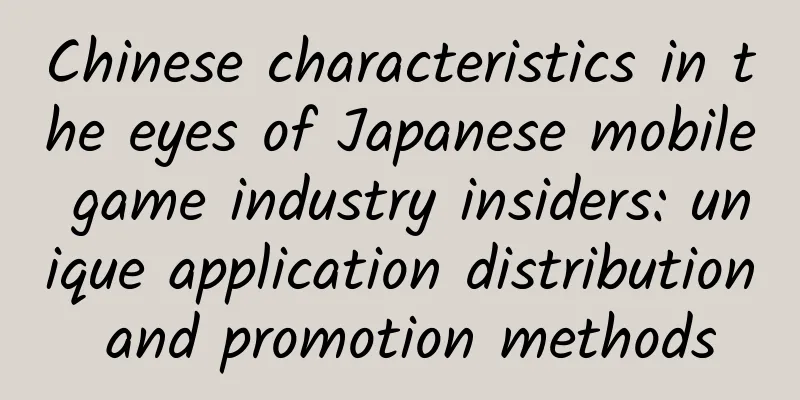|
This article is reprinted from Fortune Chinese website, with the original title "Apple can do it, can Xiaomi do it? | In-depth revelation of the world's top 500 companies", which compares Xiaomi with its master Apple and sorts out the difficulties Xiaomi may encounter in internationalization. Xiaomi is under attack in almost every field and every product line. So the question is, can it become a top 500 company?
As long as Xiaomi can unleash the power of its ecosystem like Apple did, it can achieve rapid growth and become another Chinese Fortune 500 company.
January 15, 2015:
At a conference center in Beijing, Chinese tech upstart Xiaomi unveiled its latest large-screen phone, the Mi Note, in an event as lively as a Hollywood premiere, with thousands of rabid fans snapping up $15 tickets.
Wearing distressed jeans, sneakers and a blue shirt, Lei Jun, CEO of Xiaomi, stepped onto the stage with a confident look—proud, even. And he had reason to be proud. The company he founded in 2010 was already the world’s fourth-largest smartphone maker, selling trendy, low-priced phones that cater to China’s massive middle class and youth culture. It had just raised a new round of funding that made it the world’s most valuable private startup, with a staggering $45 billion valuation. Investors were excited not just about its phones but about its “ecosystem” of online services and smart home products that could turn phone buyers into long-term loyal customers.
Tech journalists began calling Xiaomi "China's Apple." Apple's designers bristled at the title. Xiaomi phones, they argued, were cheap knockoffs of Apple's. Lei Jun disagreed. He told the audience at a launch event in Beijing that the Xiaomi phone was better. "The Mi Note is lighter, thinner, narrower, and shorter than an iPhone 6 Plus, but with a bigger screen." In the months that followed, Xiaomi's fans backed Lei Jun, and Xiaomi smartphone sales hit a quarterly high while the company's games, apps, and services had more than 100 million monthly active users.
May 21, 2016:
Still in Beijing. But this time it was at a government-sponsored technology conference in a much older exhibition center. Smartphones were the last thing most attendees wanted to talk about because phone sales had slowed. Yet a Xiaomi public relations official let slip in an interview with Chinese media that Xiaomi's sales grew just 3% in 2015, to $12.5 billion. A year earlier, Lei Jun had boldly predicted sales would reach $16 billion. As for the once-hyped ecosystem, investors said its service revenue had only reached half of what Xiaomi had expected.
Apparently, the news was never supposed to be made public: Chinese websites quickly deleted articles citing the interview, and Xiaomi declined to comment on the numbers. Still, the setback confirmed what industry observers had already suspected: Xiaomi’s sales were flattening and its revolution was in danger.
Xiaomi’s story may sound like another now-familiar headline: a tech unicorn hits a wall. But Xiaomi is unlike any other private unicorn. It’s a rising force in a country eager to prove that its consumer companies can compete globally. “Xiaomi’s mission is to change the world’s view of Chinese products,” Lei Jun said last year. Although it no longer holds the crown of most valuable startup (that title now belongs to ride-hailing app Uber), its $45 billion valuation remains a powerful symbol of its ambitions, so much so that Xiaomi proudly includes it in its product catalog.
Xiaomi's phones cost half the price of an iPhone, earning it praise from the tech media and even a small profit, but the company's high valuation is not based on its phones. Private investors value Xiaomi higher than FedEx, Caterpillar, and Delta Airlines (ranked 192nd, 194th, and 239th on the 2016 Fortune 500 list, respectively) because they believe it can build a network of products, services, and recurring revenues, an Apple-like ecosystem, not just in China but around the world.
If there is a difference between Xiaomi and Apple, it is that Xiaomi's idea of ecosystem is bigger than Apple's. Apple focuses on iTunes services and closely revolves around a series of tablets, PCs, and smartphones. Xiaomi is envisioning a huge Internet of Things. Xiaomi hopes that one day, you can control your Xiaomi water purifier, Xiaomi air purifier, Xiaomi smart mood light, and so on in your home with a few clicks on your phone - almost the entire Xiaomi smart home. Xiaomi executives and investors say that Xiaomi's current disappointing sales figures are just a small stumble on the road to its goal. "Xiaomi is still in a very early stage in terms of ecosystem layout and international expansion," venture capitalist Ji Weidong, a former Morgan Stanley technology industry analyst, told Fortune magazine. Ji Weidong's Hong Kong-based All-Stars Investment fund led a large round of financing for Xiaomi in 2014.
Betting on this arrangement is a bet on several transformative trends: the rise of China's middle class, the inclusion of ordinary users in the Internet of Things, and the ability of Chinese consumer product companies to penetrate Europe and the United States. However, as Xiaomi's growth has slowed, more and more people are skeptical about whether a startup like Xiaomi, which has no independent innovative technology and has little to show for it beyond selling smartphones, can build a large or "sticky" ecosystem like Apple and Google. "I think the road has become bumpy," said Duncan Clark, a China-based Internet consultant who once advised e-commerce giant Alibaba in its early days. The hope of betting on Xiaomi's success is becoming increasingly slim.
Xiaomi executives don't like to be called a smartphone maker. They prefer an "internet company." Even though Xiaomi has shipped 175 million smartphones in the past five years, it has stuck to that identity. Most of its phones are sold through its website, and only recently have retail outlets been set up. Xiaomi phones sold in China run MIUI, a heavily modified version of Google's Android operating system, and come pre-installed with Xiaomi's own music and app stores.
A few years ago, Xiaomi realized that phone buyers weren’t generating much recurring revenue, nor were they attracting customers who might be looking to upgrade their phones. The company began selling smartphone power banks in different colors as accessories. These products sold well, and Xiaomi was inspired. “Why not develop new products?” said Hugo Barra, the company’s vice president and head of international business. Barra was born in Brazil, graduated from MIT, and was once the leader of Google’s Android new product team. He was poached by Xiaomi to be responsible for the internationalization of the brand. He said: “We are not focused on selling phones, but on getting as many users as possible.” Xiaomi’s executives said that as long as there are devices that can attract users, we will produce them.
The Ecosystem Initiative is designed to do just that. At its core is a 170-person team that specializes in product development, supply chain, and design. But unlike Jony Ive and his design team at Apple, Xiaomi’s team works primarily with outside companies. Xiaomi works with hardware startups (and often creates them) to provide seed funding for ecosystem products. Rather than taking full control of these companies, Xiaomi encourages their founders to take risks. Xiaomi signs exclusive contracts with these companies to underwrite most of their products. In return, these companies (currently 55) can use Xiaomi’s supply chain, marketing resources, and even Xiaomi’s industrial engineers.
Xiaomi products: Xiaomi Mi Band 2, Xiaomi earphones, Xiaomi Note, Xiaomi power strip, Mijia pressure IH rice cooker
Liu De, 43, who once headed the industrial design department at the University of Science and Technology Beijing, now oversees Xiaomi's ecosystem. His approach has been blanket expansion, including everything from headphones to Bluetooth speakers to fitness bands (which also double as alarm clocks). Currently, Xiaomi's best-selling products other than phones are everyday "non-smart" products: power strips and power banks. But Xiaomi's bigger goal is to build a full smart home that can update information in real time. In April, Xiaomi invited more than 300 reporters to launch a $150 smart rice cooker in Beijing. (Users can use their phones to track the entire process of raw rice from "soaking in water" to "cooking on high heat.")
Xiaomi's ecosystem generated $750 million in sales last year, and much of that money went to the startups it supports under revenue-sharing agreements. Juniper Research estimates that China's smart home market could reach $15 billion by 2018. Liu De said Xiaomi's ecosystem could generate as much revenue as smartphones in less than five years. Last year, 90% of Xiaomi's $12.5 billion in revenue came from smartphones. So Liu De and Xiaomi are basically looking to quickly turn a $750 million, mostly domestic business into a more global business with at least $11 billion in revenue.
A visit to Xiaomi's new startup Yeelight reveals the complexity of Xiaomi's plans: The 60-employee Qingdao-based company makes a "smart" mood bulb with 16 million colors and a Bluetooth bulb reminiscent of the Hue bulbs from Dutch electronics giant Philips.
In 2014, Google bought Nest for $3.2 billion, and smart home startups were all the rage. Yeelight founder Jiang Zhaoning was courted by venture capitalists. Jiang Zhaoning said Xiaomi's support was like a drop from the sky, helping the company in every way, from brand building to quality control. It also allowed Yeelight to bypass traditional retailers, which typically cut procurement prices by 40%. Yeelight's products were displayed on the homepage of Xiaomi's official website, which has more than 140 million unique visitors per month, according to China Rank.
Jiang Zhaoning said Yeelight has sold 500,000 bulbs and mood lights since last summer, with sales growth 10 times that before Xiaomi's investment, and prices more than 80% lower than Philips' lighting kit Hue. Yeelight has achieved a kind of symbiotic success, with Xiaomi relying on its success in Yeelight to develop its ecosystem.
However, the success of companies like Yeelight has also fueled skepticism about Xiaomi. The challenges Yeelight faces are also the challenges faced by many startups in Xiaomi's ecosystem. If Yeelight wants to sell its products abroad, it will definitely not be able to maintain its floor price, and the price will rise. In foreign countries, light bulbs also have intellectual property rights and need to be authorized. (China also has strong intellectual property laws, but they are not strictly enforced.)
Jiang Zhaoning was a software engineer at Lucent. He admitted that in order to sell in Europe and the United States, Yeelight must first obtain patent authorization from other companies, which will inevitably lead to a retail price increase of several percentage points. Moreover, since Xiaomi's e-commerce website has almost no influence abroad, Yeelight still has to cooperate with traditional retailers, which will increase the price by another 30% to 40%. In short, unless Yeelight launches its own innovative technology, it will lose most of its price advantage abroad.
Xiaomi has run into similar IP issues abroad. Swedish telecom giant Ericsson has accused Xiaomi for years of using Ericsson’s wireless technology without authorization. In 2014, when Xiaomi began selling phones in India, Ericsson won a lawsuit against Xiaomi. (The case is ongoing, and Xiaomi declines to comment on pending cases.) In May, Xiaomi announced a deal with Microsoft to buy 1,500 of its patents, which will help resolve the IP issues surrounding Xiaomi’s phones. But those patents are of little use for light bulbs and water purifiers.
Liu De admitted: "At least some ecosystem companies have encountered such intellectual property issues." Without the support of Xiaomi's website, only a few ecosystem products have entered the foreign market, and they are not high-profit signature products. For example, the Xiaomi fitness band has achieved some success in the United States, but it only sells for $15.
Three years ago, Lei Jun told The New York Times: “We are not a low-end company that makes low-end phones.” Yet many Chinese consumers think so, as it has failed to successfully launch trustworthy products. This year, Xiaomi’s first air purifier was criticized by Shanghai regulators for not producing enough clean air. (The company said the purifier “passed all the standards of Beijing regulators.”) On Xiaomi’s own forums, users have also complained about the quality of its 4K TVs.
Even the phones that made Xiaomi famous have had problems. Despite the support of a host of suppliers, including Foxconn, Xiaomi's products are less reliable than those of more established rivals. Some Xiaomi phone owners complain of fragile screens and static noise coming from the headphone jack. The latest flagship phone, the Xiaomi 5, has already attracted complaints since its release in March. Some users say the new phone is so hot that it often reaches nearly 50 degrees Celsius.
Xiaomi said that the quality complaints about the Xiaomi 5 phone were "isolated cases" and that "we will investigate all legitimate complaints." However, the view that Xiaomi phones are unreliable has already had an impact. Internet consultant Duncan Clark recently surveyed mobile phone users in China. The results showed that only 37% of Xiaomi users said they would buy a Xiaomi phone again. In contrast, 74% of iPhone users said they would buy an iPhone again. Clark said: "Xiaomi's user stickiness is insufficient, and an ecosystem should not be like this."
Xiaomi's growing pains might not have mattered as long as its smartphone sales continued to soar. But it wasn't so lucky. Before launching the Mi Note, Lei Jun announced a sales target of 100 million smartphones in 2015. But it ended up shipping just 71 million units, according to IDC. In the first quarter of 2016, Xiaomi shipped 10.9 million phones, down 26% year-on-year. Global mobile phone sales fell 0.5% during the same period.
These figures shake Xiaomi's $45 billion valuation. Xiaomi's operating income last year was $12.5 billion. If it can achieve an operating profit margin of 10%, then its valuation is 38 times its profit, which is quite inflated. In fact, in order to attract users, Xiaomi sells mobile phones at a price close to cost, and the profit is likely to be only 5%. After deducting taxes, Xiaomi's valuation is 80 times its profit. If Xiaomi wants to go public, it needs to at least quadruple its operating income to bring its valuation level close to that of its competitors.
It is certain that if Xiaomi goes public, panicked investors will sell their stocks. Apple's stock price has fallen 12% since it disclosed in April the impact of slowing smartphone sales on operating income. Apple's technology ecosystem is the most successful in the world, generating $6 billion in operating income for Apple each fiscal quarter, accounting for about 12% of Apple's total revenue. However, this revenue is deeply affected by the growth rate of hardware device sales. Every time people buy a new phone, they spend more money on applications and services. When the shiny new phone fades, these spending will plummet.
Xiaomi, of course, is not yet listed. It does not need to raise more money yet, so as not to conduct a "down round" (i.e., raise funds at a lower valuation than the previous round) that could cause a public outcry. However, there are reports that the company is preparing to issue bonds. Xu Dalai, co-founder of Shunwei Capital, which invested in Xiaomi in its early days, said that he and others believe that Xiaomi will eventually dominate China's Internet of Things. They see Xiaomi as both an Internet company that benefits from low costs and the future Ikea, churning out high-quality products at low costs.
Ji Weidong of All-Star Investment Fund believes that Xiaomi's low smartphone prices mean that Xiaomi's potential customer base is much larger than Apple's. To the skeptics, Ji Weidong said, look at Tencent. Before launching WeChat, the Chinese Internet giant Tencent was not favored by investors. Since 2011, WeChat has become the most popular social network in China, driving Tencent's revenue to more than triple.
Ji Weidong imagines Xiaomi will follow a similar growth curve. But we can't see it yet. Xiaomi's app and game sales in 2015 were $560 million, missing its $1 billion sales target. Unlike Tencent and Apple, the growth of Xiaomi's ecosystem depends on it making popular products such as rice cookers and drones. These products are in a highly competitive market and have thin margins. "These are single-purpose products. A rice cooker can only be used to cook rice. There is no content to consume and it does not bring you additional operating income," said Neil Shah of Counterpoint Research in Mumbai.
Even if Xiaomi doesn’t deserve its $45 billion valuation, you don’t have to shed tears for the investors who gave it such a high valuation. The core investors who raised $1.1 billion for Xiaomi at the end of 2014 included Singapore’s sovereign wealth fund GIC, Ji Weidong’s All-Star Investment Fund, Russian billionaire Yuri Milner’s DST, and Alibaba founder Jack Ma’s Yunfeng Fund. Although these investors would not discuss the financing agreement with Fortune, since they got involved long after Xiaomi started, this financing is likely to come with a “ratchet” clause, that is, if Xiaomi raises funds at a lower valuation or goes public, these investors will get more shares.
Even if Xiaomi doesn’t live up to its investor potential, it could still be a successful business. The Mi 5, which Xiaomi unveiled at Mobile World Congress in Barcelona this spring, could revive sales. And a patent deal with Microsoft could help it expand into more foreign markets. Entering India and Brazil has given Xiaomi 9% of its revenue outside of China. Few Chinese companies have pulled that off.
Then there’s the dream of a smart home ecosystem. Xiaomi won’t have that cake all to itself, though. Huawei sold 108 million phones last year, taking the title of market share leader from Xiaomi. It’s partnering with Haier, which this year spent $5 billion to buy GE’s appliance business, to market its own smart home accessories. “I don’t want to be seen as number two,” Lei Jun once said at a Xiaomi promotional event. But despite several years of crazy growth, the top spot is becoming more out of reach for Xiaomi. Equally out of reach is the Fortune 500 list, if it doesn’t resume rapid growth soon. As a winner of Toutiao's Qingyun Plan and Baijiahao's Bai+ Plan, the 2019 Baidu Digital Author of the Year, the Baijiahao's Most Popular Author in the Technology Field, the 2019 Sogou Technology and Culture Author, and the 2021 Baijiahao Quarterly Influential Creator, he has won many awards, including the 2013 Sohu Best Industry Media Person, the 2015 China New Media Entrepreneurship Competition Beijing Third Place, the 2015 Guangmang Experience Award, the 2015 China New Media Entrepreneurship Competition Finals Third Place, and the 2018 Baidu Dynamic Annual Powerful Celebrity. |










